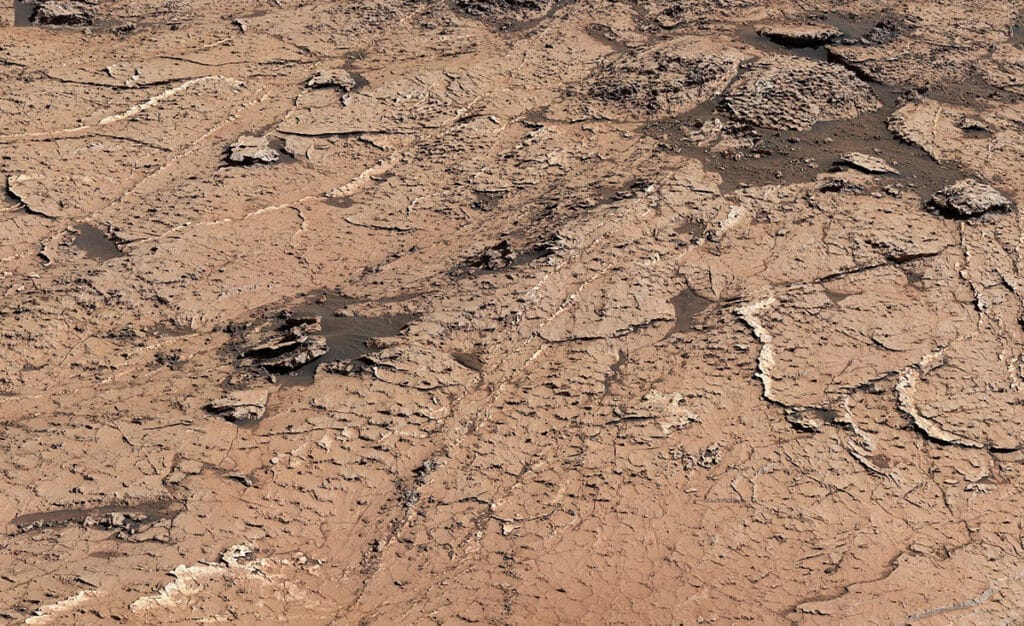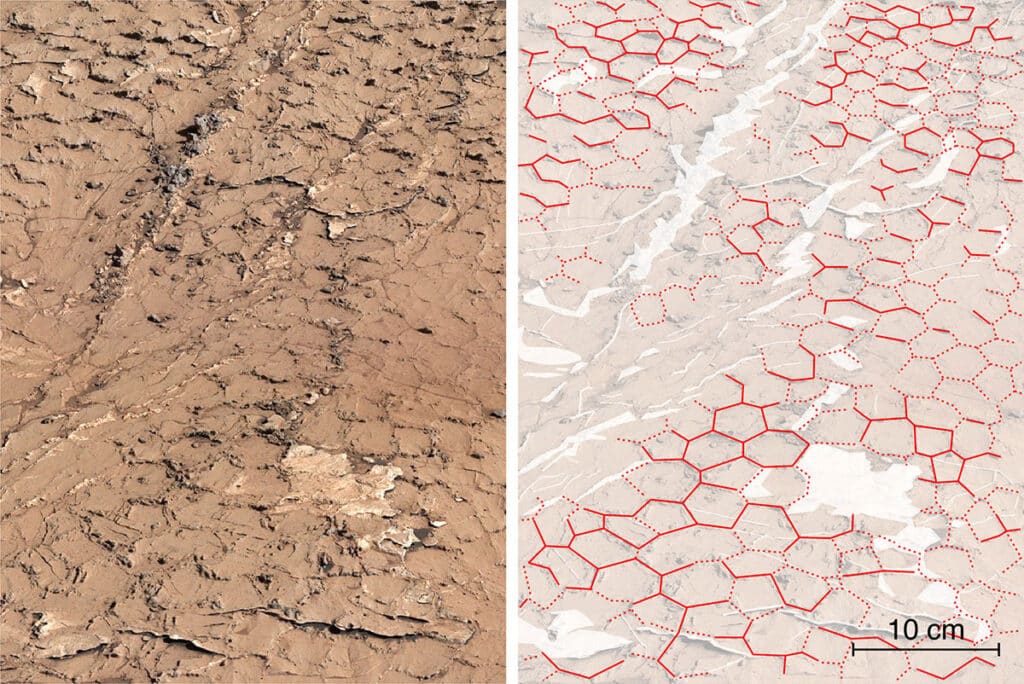On June 20, 2021, the 3,154th Martian day, or sol, of the mission, NASA‘s Curiosity Mars rover using its Mastcam, captured preserved, ancient mud cracks. These cracks were believed to form after long cycles of wet and dry conditions over many years.
It is the first time these wet-dry cycles have been discovered on Mars. The cracks were discovered as the rover investigated a region between an area rich in sulfate minerals and one rich in clay.


The mosaic is made up of 143 images that were stitched together after being sent back to Earth. Figure A shows a close-up of the mud cracks. Figure B shows another close-up of the mud cracks alongside the same image with the hexagonal shapes outlined in red.
The Racetrack playa in Death Valley National Park is one area on Earth where hexagonal formations can be observed. It takes many years of alternating rainy and dry conditions for them to form. Initially, the mud fractures have sharp, T-shaped angles within their “pits.” Those sharp angles soften into Y-shapes that develop ridges as the granite is degraded after being continuously rehydrated.
Curiosity’s scientists are intrigued by evidence of wet-dry cycles because, while no one is entirely certain how life first arises, a widely accepted view contends that these cycles are beneficial, if not essential. According to experts, the conditions that support microscopic life, such as those seen in a long-lasting lake, are different from those thought to trigger the chemical reactions that may give rise to life.
Long chains of carbon-based molecules called polymers, which require the ideal conditions, drive those chemical reactions. Chemicals must be mixed with water to form a soup in which they can interact. Too much water will thin the soup, making it impossible for chemical reactions that produce polymers to take place; not enough water will prevent the chemicals from mixing and reacting properly. Wet-dry cycling may occur.
